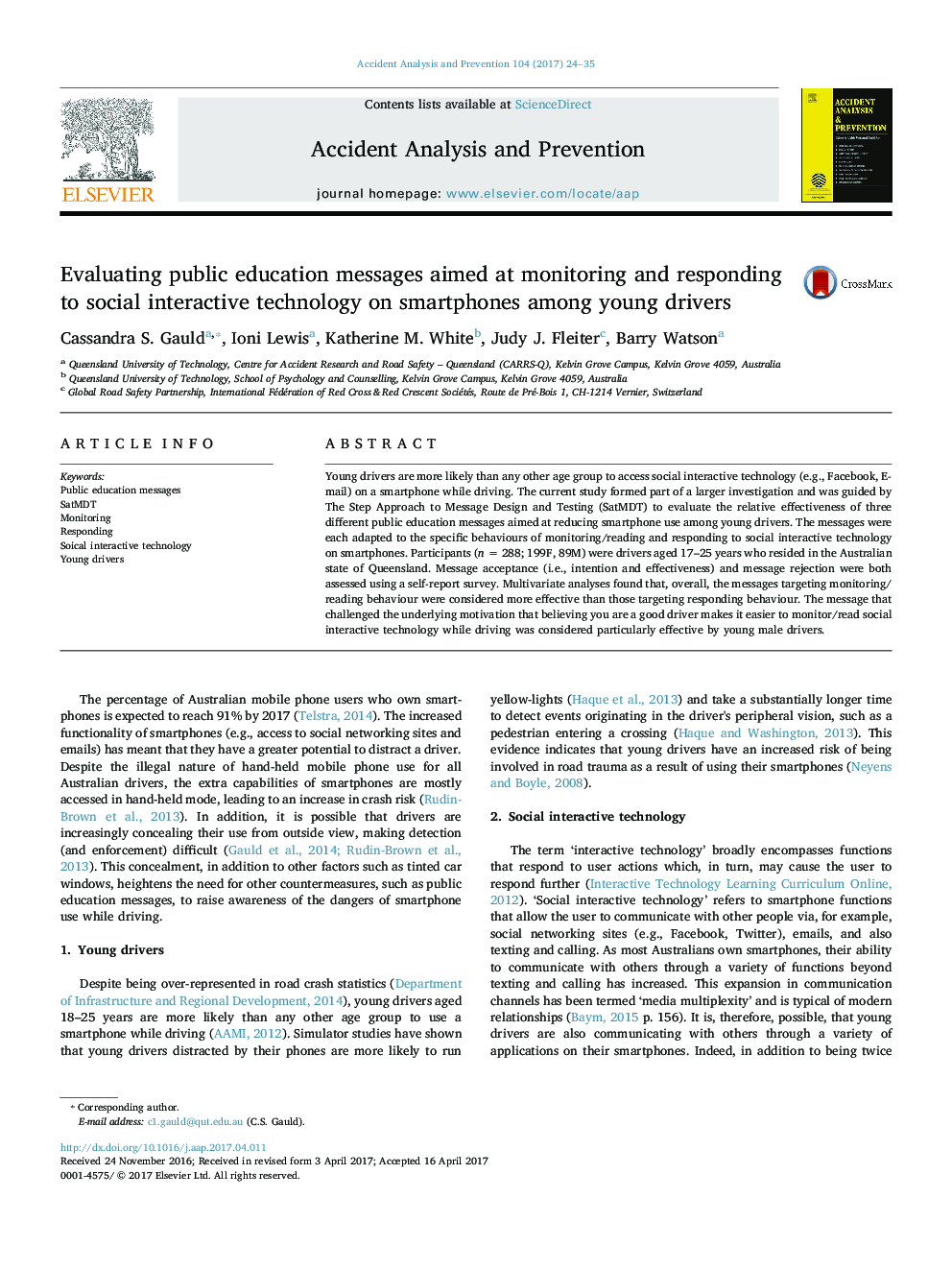| Article ID | Journal | Published Year | Pages | File Type |
|---|---|---|---|---|
| 4978618 | Accident Analysis & Prevention | 2017 | 12 Pages |
Abstract
Young drivers are more likely than any other age group to access social interactive technology (e.g., Facebook, E-mail) on a smartphone while driving. The current study formed part of a larger investigation and was guided by The Step Approach to Message Design and Testing (SatMDT) to evaluate the relative effectiveness of three different public education messages aimed at reducing smartphone use among young drivers. The messages were each adapted to the specific behaviours of monitoring/reading and responding to social interactive technology on smartphones. Participants (n = 288; 199F, 89M) were drivers aged 17-25 years who resided in the Australian state of Queensland. Message acceptance (i.e., intention and effectiveness) and message rejection were both assessed using a self-report survey. Multivariate analyses found that, overall, the messages targeting monitoring/reading behaviour were considered more effective than those targeting responding behaviour. The message that challenged the underlying motivation that believing you are a good driver makes it easier to monitor/read social interactive technology while driving was considered particularly effective by young male drivers.
Keywords
Related Topics
Physical Sciences and Engineering
Chemical Engineering
Chemical Health and Safety
Authors
Cassandra S. Gauld, Ioni Lewis, Katherine M. White, Judy J. Fleiter, Barry Watson,
